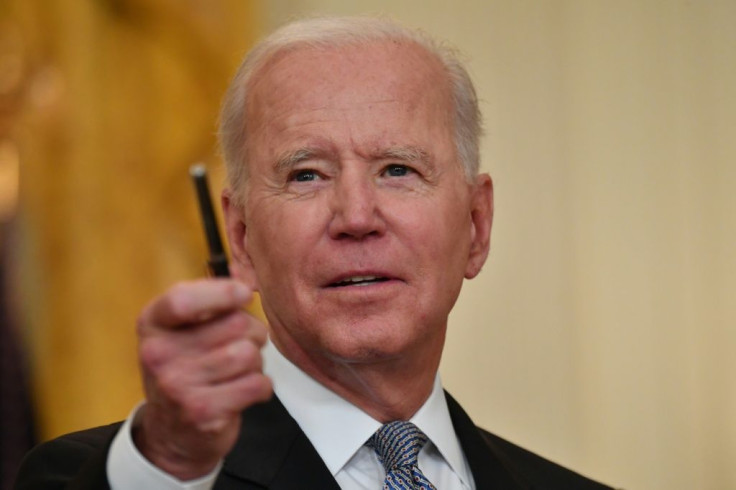Biden Keeps Pressure On China, Aims Spending At Competitive Edge
US President Joe Biden's trade and industrial policy towards China is one of his few areas of agreement with predecessor Donald Trump.
After maintaining tariffs Trump imposed on Beijing and expanding a blacklist of Chinese firms, Biden is now pushing Congress to approve a plan to invest in research and development to maintain the United States' competitive edge.
Here are key aspects of the plan, which the Senate is expected to adopt Tuesday:
As with Trump, Biden campaigned on bringing manufacturing jobs that had moved overseas back to the United States, particularly for strategic components like semiconductors and pharmaceutical supplies.
But Beijing appears to have already won the manufacturing battle, and with its "Made in China 2025" plan launched six years ago, intends to dominate the technologies of tomorrow.
The United States is therefore pursuing a more limited goal: defending the leadership of its top industrial and tech firms.
Both Democrats and Republicans are also concerned about the progress Beijing has made on 5G technology, the next generation of ultra-fast mobile internet, and that it could compromise US national security.
The technology will allow for even faster movement of data, and Washington fears China's investment could pose a risk to trade secrets and private information, or allow for malicious actors to disrupt the network.
Under Trump, the US officials worried that China could shut down its communications networks.
Those concerns have intensified in recent months after cyberattacks hit major US infrastructure, including a pipeline supplying fuel to the country's east coast.
Trump cited the country's national security when he barred telecommunications firms from buying components from companies deemed risky -- an order aimed in particular at Chinese tech giant Huawei.

Last week, Biden expanded the list of companies Americans are banned from doing business with.
He also amended Trump's original executive order to include Chinese companies involved in surveillance technologies that could be used against dissidents in China, like its Muslim Uighur minority, and also around the world.
Under Trump, Washington levied hundreds of billions of dollars in punitive tariffs on goods imported from China.
Biden has not lifted them, and his trade representative Katherine Tai has made little secret of the fact that they're intended as a means of pressuring Beijing.
China subsidizes its companies and invests massively in them.
The US plan, which must also be approved by the House of Representatives, takes a similar approach, providing for the promotion of American firms and production with an eye towards boosting local employment.
A total of $52 billion is to be invested over five years to encourage the manufacturing of semiconductors in the United States, as well as for research and development into the technology.
Another $1.5 billion will go towards the development of 5G technology.
Under Trump, relations between Washington and Beijing grew markedly worse, but the two economies still remain deeply interconnected.
However, the combination of the trade war and the Covid-19 pandemic has cut into their commerce. The next question is whether the world's two largest economies will begin to truly decouple.
© Copyright AFP 2024. All rights reserved.




















